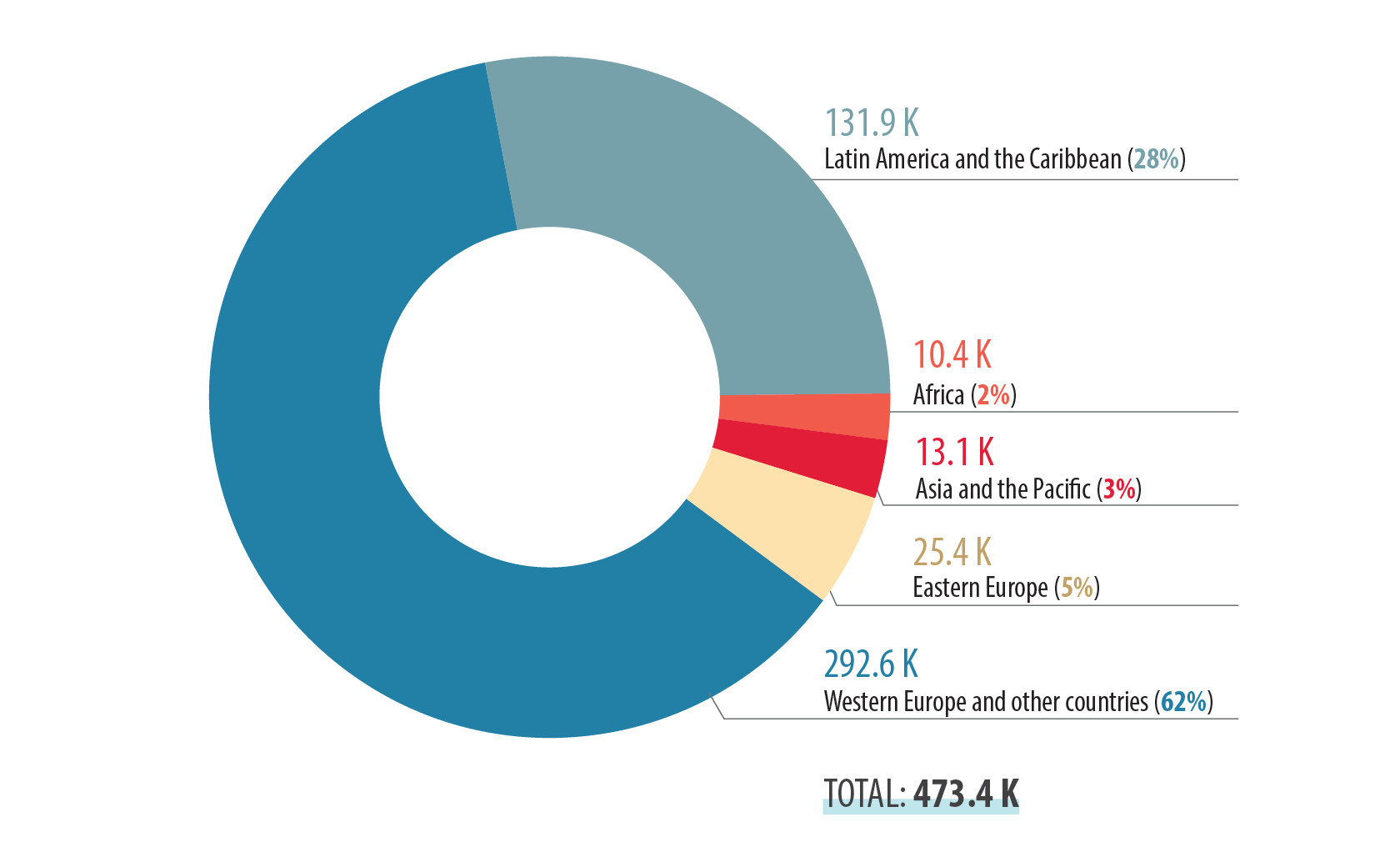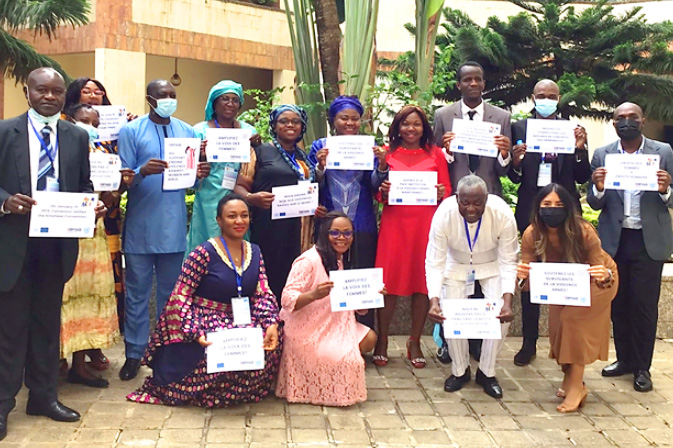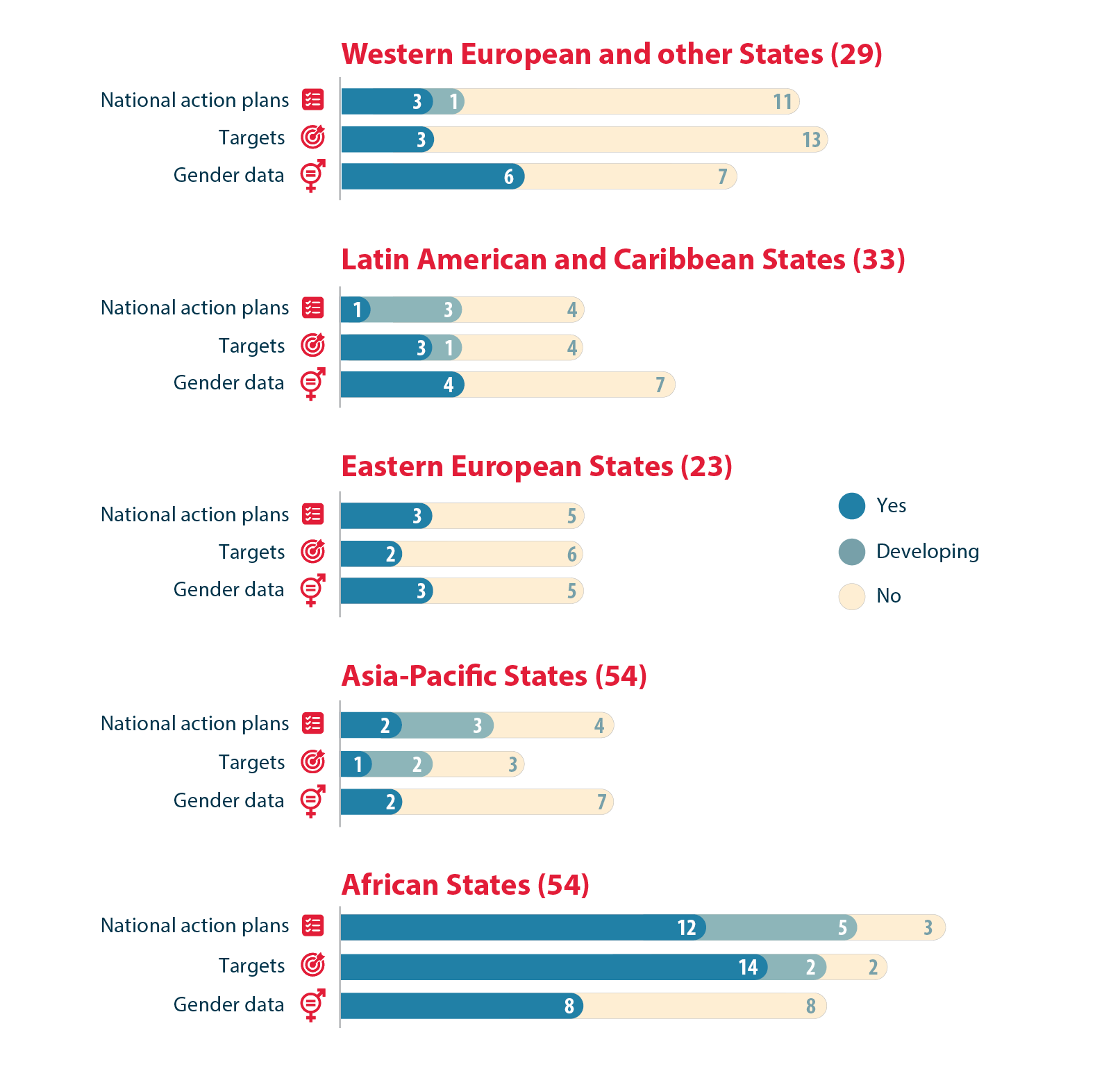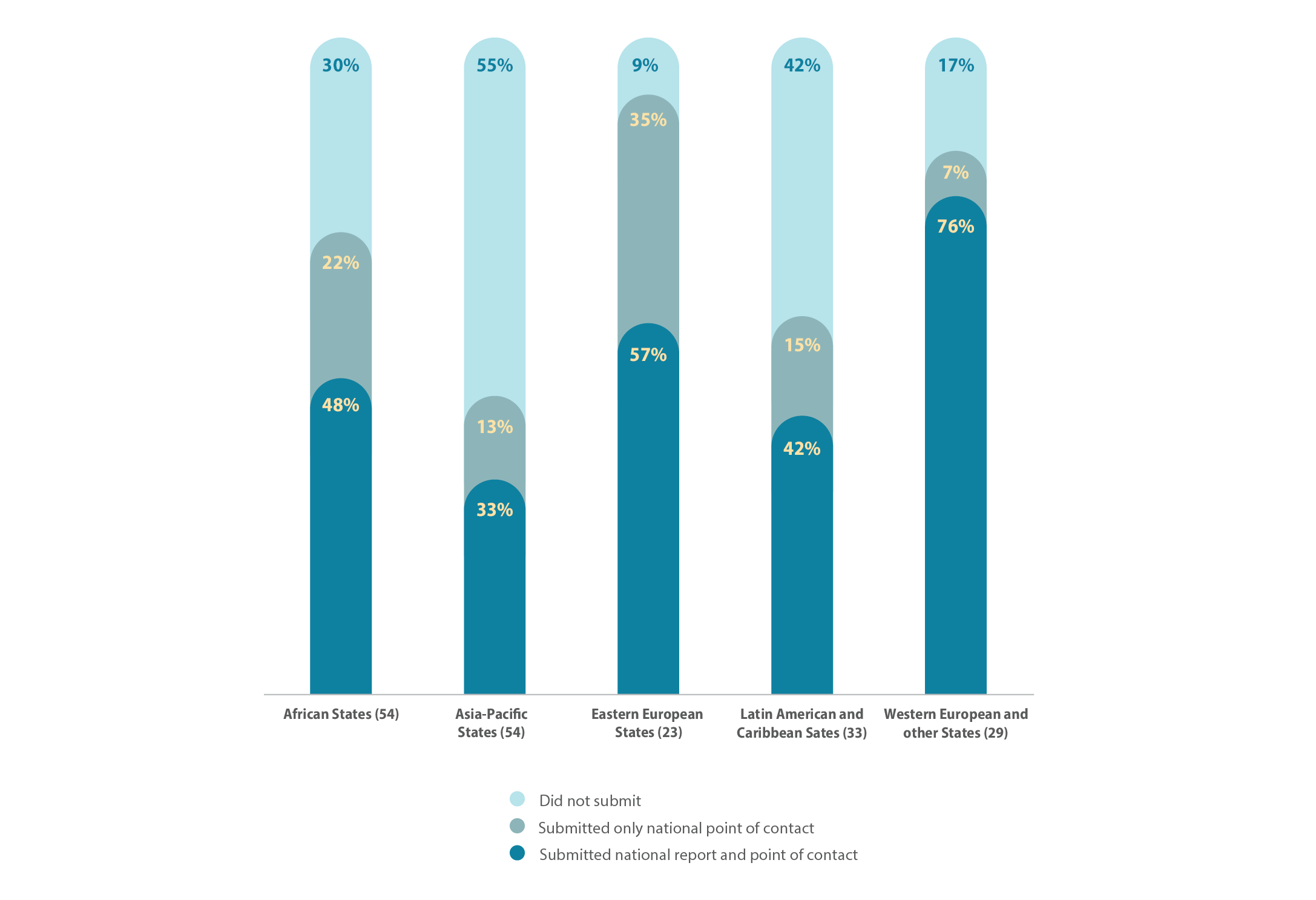Since 1967, five nuclear-weapon-free zones have been established around the world. … Expanding such zones to more regions will strengthen global nuclear disarmament and non-proliferation norms and contribute to building a safer world.
The COVID-19 pandemic continued to complicate regional disarmament activities in 2021. Substantial restrictions on travel and in-person interaction persisted in every region, posing a challenge for States and for global, regional and subregional entities seeking to advance their ambitions in support of disarmament, non-proliferation and arms control. In that context, virtual meeting technologies provided actors in the field of regional disarmament with valuable support in taking forward a range of projects and initiatives, even as those actors conducted their work in hybrid or in-person formats where circumstances allowed. The Office for Disarmament Affairs regularly engaged with such actors throughout the year by conducting policy dialogues, long-term projects and exchanges on subjects such as the illicit trade in small arms and light weapons, the non-proliferation of weapons of mass destruction, and counter-terrorism.
In the field of weapons of mass destruction, eight States ratified or acceded to the Treaty on the Prohibition of Nuclear Weapons during the year. In Africa, Comoros, Guinea-Bissau and Seychelles ratified the Treaty. In Asia and the Pacific, Cambodia and the Philippines ratified the Treaty and Mongolia acceded to it. In Latin America, Chile and Peru ratified the Treaty. Separately, Botswana acceded to the International Convention for the Suppression of Acts of Nuclear Terrorism. Moreover, Comoros ratified the Comprehensive Nuclear-Test-Ban Treaty, while Cuba both signed and ratified it. The Treaty gained no new signatory States during the year.
On conventional weapons, States achieved progress in adherence to the Protocol against the Illicit Manufacturing of and Trafficking in Firearms, Their Parts and Components and Ammunition, supplementing the United Nations Convention against Transnational Organized Crime (Firearms Protocol). Comoros acceded to the Firearms Protocol in June, while Germany ratified the Protocol in August.

Destroying weapons is an effective method of reducing the number of illicit small arms in circulation and preventing the potential diversion of weapons into illicit markets. Therefore, destruction is critical to cutting arms flows in accordance with Target 16.4 of the Sustainable Development Goals. According to national reporting under the Programme of Action on Small Arms and Light Weapons, national authorities destroyed an average of 48 per cent of the weapons seized, found or surrendered during the period 2018–2019.a More than 473,000 weapons were destroyed during that period, including arms collected in previous years and obsolete arms removed from national stockpiles.b Western European and other countries accounted for more than 65 per cent of the reported global destruction, followed by Latin America and the Caribbean (28 per cent).
a Simple average based on data from 29 Member States reported through the 2020 national reports on the implementation of the Programme of Action.
b Based on data from 96 countries, 2020 national reports on the implementation of the United Nations Programme of Action on small arms and light weapons.
The General Assembly decided to further postpone the fourth Conference of Nuclear-Weapon-Free Zones and Mongolia, which had originally been planned for 2020, but States parties and signatories to the relevant treaties establishing nuclear-weapon-free zones, including Mongolia, continued to hold informal consultations on organizational and substantive preparations.
The Pacific Islands Forum convened the first Meeting of the Rarotonga Treaty’s Consultative Committee on 15 December. The Meeting was held in response to a call by States parties in 2020 to advance a recent decision by Forum leaders to operationalize the Treaty.
The five nuclear-weapon States reiterated their commitment to the aims and objectives of the Treaty on the Southeast Asia Nuclear Weapon-Free Zone; however, as at the end of 2021, none had signed the Protocol to commit to respect the nuclear-weapon-free status of the Treaty’s parties and to forswear the use or threat of use of nuclear weapons against those States. The leaders of the Association of Southeast Asian Nations (ASEAN) reaffirmed their commitment to engage with the nuclear-weapon States and intensify ongoing efforts to resolve all outstanding issues in accordance with the Treaty’s objectives and principles.
Meanwhile, the second session of the Conference on the Establishment of a Middle East Zone Free of Nuclear Weapons and Other Weapons of Mass Destruction was held from 29 November to 3 December. During the session, the Conference reached consensus to achieve further progress in the process by, inter alia, undertaking substantive deliberations on various key aspects of the future Middle East zone. The participating States adopted a final report and several decisions, including on the adoption of rules of procedure and the establishment of a working committee to continue deliberations during the intersessional period.
The Office for Disarmament Affairs, for its part, continued to engage intensively with numerous partner institutions through its regional centres for Africa, Latin America and the Caribbean, and Asia and the Pacific. Following a series of explosions on 7 March at a military barracks in Bata, Equatorial Guinea, the Centre in Africa developed a joint project proposal in coordination with the United Nations country team in Malabo to support the Government in weapons security and ammunition management. The Centre for Latin America and the Caribbean focused its efforts on assisting Governments in the region to implement international instruments on conventional arms, in particular the Roadmap for Implementing the Caribbean Priority Actions on the Illicit Proliferation of Firearms and Ammunition across the Caribbean in a Sustainable Manner by 2030 (Caribbean Firearms Roadmap), launched in 2019. The Centre for Asia and the Pacific kicked off a new project to support the establishment and maintenance of gun-free zones in that region, including through the development of an online course.

In June 2021, the United Nations Regional Centre for Peace and Disarmament in Africa trained 45 governmental and civil society representatives in Cameroon on the topic of gender and small-arms control.

This graph shows the varying levels of reporting, by region, on collecting gender-disaggregated data, establishing national targets and adopting national action plans on implementing the Programme of Action on Small Arms and Light Weapons and its International Tracing Instrument, as included in the submitted reports. The number of Member States in each regional group is noted next to the name of the group.
Based on the graph, African States have the highest rates of reporting, reflecting the positive impact of the active support and interventions of the Office for Disarmament Affairs in the region. Western European and other States also have high rates of reporting. However, most of them report that they do not collect gender-disaggregated data, have not set national targets and have not adopted national action plans. All other regions have low rates of reporting, with the Asia-Pacific proportionally having the lowest.
Overall, roughly 70 per cent of States do not report on collecting gender-disaggregated data, establishing national targets or adopting national action plans, reflecting the limited reporting of Member States. None of the regions have exceeded a reporting rate of 56 per cent.

States submit national reports on implementing the United Nations Programme of Action on Small Arms and Light Weapons and its International Tracing Instrument every two years. The total reports submitted respectively in the 2018 and 2020/21 reporting cycles were 120 and 97. National points of contact are designated by Member States for the implementation of Programme of Action and the International Tracing Instrument. This graph outlines the percentage of submissions of Programme of Action national reports and designations of national points of contact by region. The number of Member States in each group is noted next to the name of each regional group.
Proportionally, the Western European and other States and the Eastern European States have the highest rates of national points of contact designation and reporting to the Office for Disarmament Affairs. Only 9 per cent of Eastern European States and 17 per cent of Western European and other States have not submitted a national point of contact. The African States and Latin American and Caribbean States have decent rates of national point of contact designation, with over 50 per cent of States having reported. However, a significant room for improvement remains. The Asia-Pacific States have the lowest national point of contact designation rate, with 55 per cent of countries not designating a point of contact. Overall, 65 per cent of the 193 Member States designated a national point of contact, whereas only 48 per cent of States submitted a national report under the Programme of Action or the International Tracing Instrument.